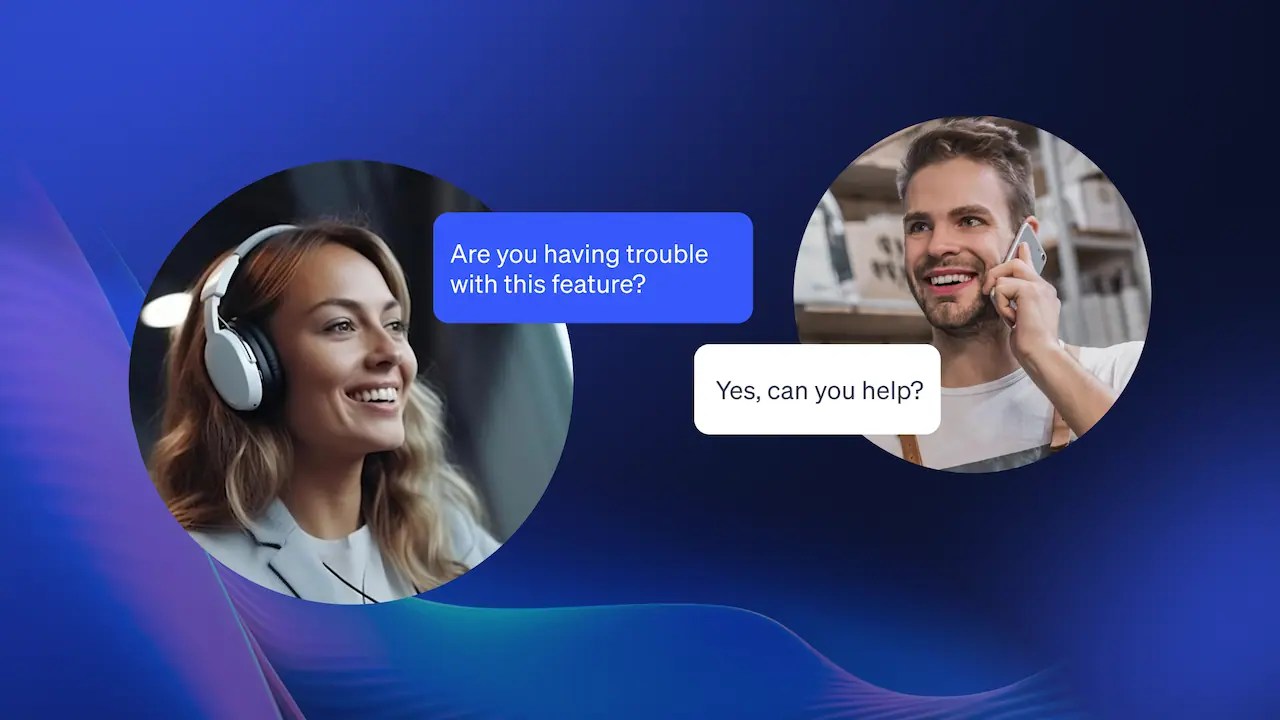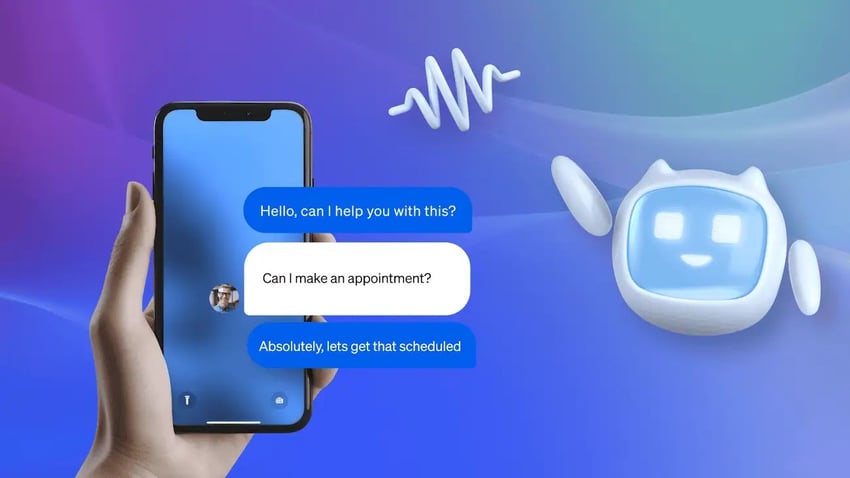Imagine getting help before you even ask for it. That’s what proactive customer service feels like: smooth, easy, and kind of magical. Instead of waiting for customers to report problems, you solve issues before they happen.
According to the 2025 Nextiva CX Trends Report, 96% of business leaders find CX a key driver of business outcomes, making offering proactive support necessary. Learn more about proactive customer service, why it matters, and how to implement it.
Proactive Customer Service Definition
Proactive customer service means solving problems before customers need to ask for help. It includes tools like chatbots, knowledge bases, 24/7 customer support, and live alerts that prevent issues or answer questions early. This approach helps you:
- Improve customer satisfaction.
- Reduce support volume and agent burnout.
- Build stronger customer relationships.
- Reduce churn by preventing frustration.

Customer satisfaction can also come from using contact center tools like customer service CRMs and automatic call distribution (ACD) that help your agents provide faster and more personal support.
Proactive vs. Reactive Customer Service
Understanding the difference between proactive and reactive customer service is key for enhancing the customer experience. It helps you find gaps in the customer journey and identify customer pain points before they arise.
Proactive customer service helps you anticipate and address customer needs and issues before they arise. You plan messaging in advance with regular communication, updates, and preventative actions. This reduces support tickets, increases customer loyalty, and lessens customer churn.
Reactive customer service involves waiting for the customer to reach out with a problem. You respond to customer inquiries or issues after they occur. It focuses on putting out fires rather than preventing them, leading to customer frustration, especially if problems are frequent or unresolved.
If you’re unable to resolve anticipated issues before they occur, proactive communication allows you to alert customers about potential issues before they’re affected.
Key Features of Proactive Customer Service
Proactive customer engagement is all about staying one step ahead and acting early. Here are the key ways to make that happen, starting with understanding what your customers need before they say it.
Anticipating customer needs
To offer proactive support, you first need to know where customers typically get stuck. Look at what they’re searching for, asking about, or struggling with across all channels.
Here are some smart ways to spot common pain points:
- Find your most-read or most-escalated articles.
- Use sentiment analysis or keywords to highlight recurring problems.
- Monitor what customers are saying about you on social media.
- Talk to support, sales, and product teams to uncover patterns, confusion points, and top feature requests.
Preemptive communication
Customers don’t like surprises, unless they’re good ones. Reaching out with updates before they’re needed builds trust and prevents frustration. Whether it’s a shipping delay, a service outage, or a personalized product recommendation, proactive messages show customers you’re paying attention and that you care about their experience.
Sending helpful notifications
Timely reminders can make all the difference. Notifications about upcoming payments, account activity, or scheduled maintenance help customers stay on top of things and avoid last-minute issues. These small messages reduce confusion, build confidence, and reduce support requests.
Gathering and acting on feedback
Customers want to feel heard. Regularly collecting feedback through surveys, reviews, or support follow-ups helps you understand what’s working and what isn’t. More importantly, managing customer feedback and using it to improve your product or service shows customers you’re listening and that their voice matters.
Leveraging technology
Smart tools make proactive customer service possible. AI, automation, and analytics can track customer behavior, flag issues early, and personalize support. These technologies help your team respond faster, reduce manual work, and deliver a better experience at scale.
For instance, you can use AI customer service to streamline support and provide better customer experiences. Here are a few ways you can use AI in customer support:
- Chatbots can provide customers with instant answers.
- Sentiment analysis can detect frustration during support experiences.
- Predictive analytics helps prevent churn.
- Smart routing matches qualified agents with specific issues.
- Personalized product or content recommendations to enhance CX.
- Auto-tagging and prioritizing tickets based on customer needs.
- Voice analysis for tone and intent detection.
Benefits of Proactive Customer Support
Proactive customer support can benefit your company in many ways. It helps you:
- Reduce issues: A proactive strategy weeds out low-priority problems. Instead, only the most critical ones reach your agents.
- Scale as your company grows: Proactive service and tools don’t require more agents. For example, a chatbot scales with your company so that you can add more customers without additional support agent costs.
- Improve customer experience: Proactive communication improves CSAT, boosts customer retention, and even increases sales.
- Boost your brand’s reputation. Consistently taking proactive measures positions your brand as attentive and reliable, truly valuing and caring for the customers.
- Increase sales and revenue: Satisfied and loyal customers are more likely to make repeat purchases and recommend the brand to others, driving sales growth.
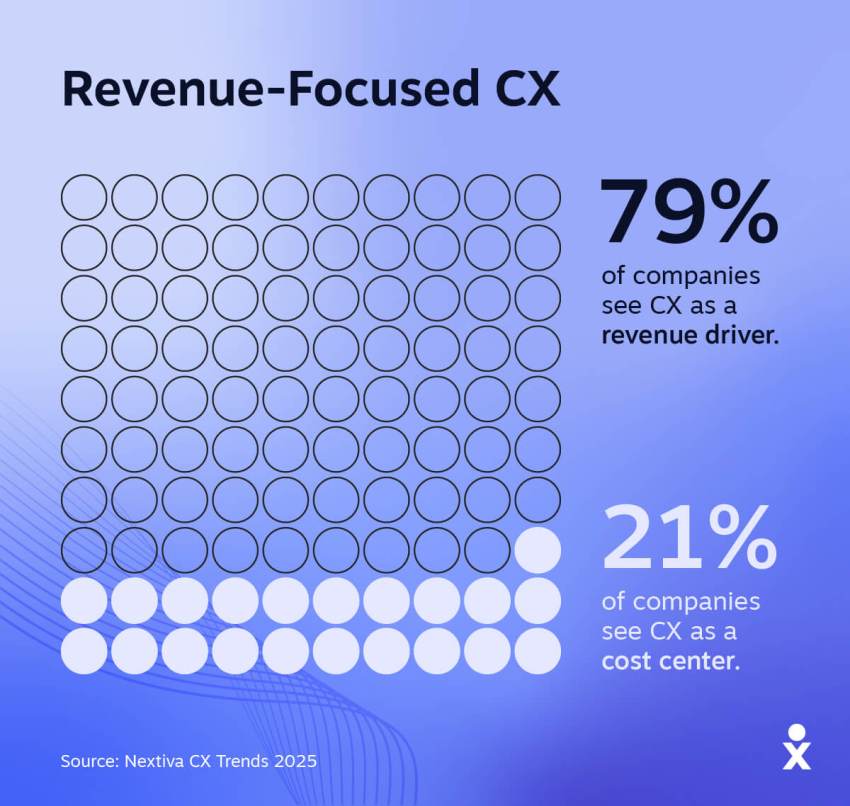
Proactive Customer Service Examples
Proactive support isn’t just about big systems or advanced tools. When done right, everyday resources often make the biggest difference and help you meet and exceed customer expectations. Here are a few simple but powerful ways to provide proactive customer support before they ever reach out.
1. Knowledge base articles and FAQs
Self-service tools like an updated knowledge base take a customer-centric approach that improves the customer experience. A well-organized, up-to-date knowledge base helps customers find answers fast, without needing to contact support.
To make yours more effective:
- Organize content by journey stages like “Getting Started” or “Billing.”
- Use a clear, consistent structure for each article.
- Include short videos to walk customers through complex steps.
- Review and update articles regularly to keep them relevant.
A proactive customer service approach like this empowers users to solve issues on their own, improving satisfaction and reducing ticket volume.
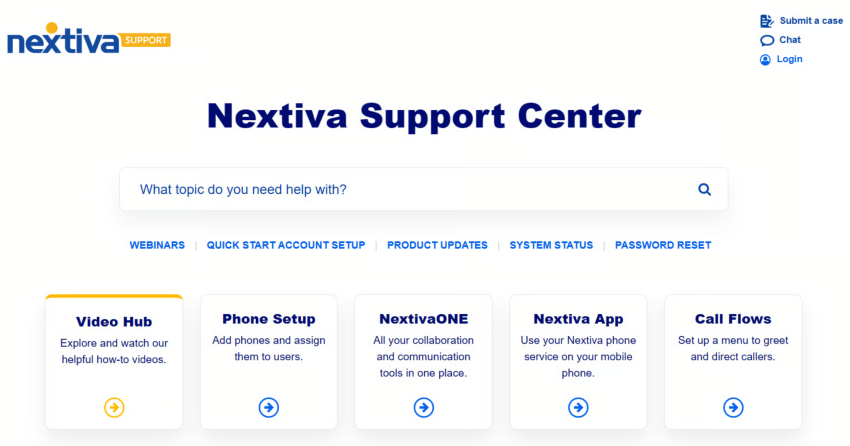
2. AI-powered chatbots
Chatbots have become more sophisticated and can now resolve many common customer issues independently. However, chatbots and intelligent virtual agents (IVAs) can also anticipate problems by detecting subjects and making real-time suggestions, making them a key part of proactive customer support strategies.
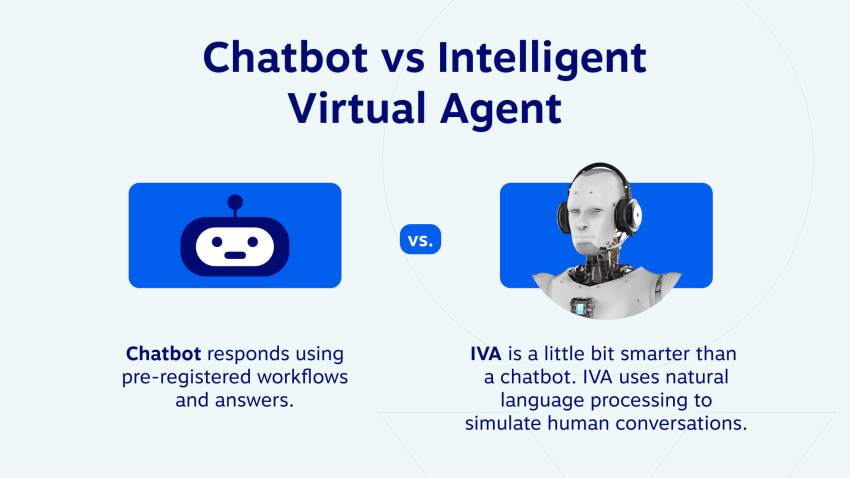
For example, an IVA on your pricing or plan page could suggest a plan based on company size or needs. And a chatbot on a product page could ask questions and then offer relevant paths, help docs, or knowledge base articles. By handling routine questions, these bots free human agents to focus on high-priority tasks that need a personal touch.
3. Live chat with skill-based routing
Intelligent virtual agents are great for handling routine customer queries, anticipating customer needs, and providing proactive assistance in live chat scenarios. But many support requests still require a human touch. When you hand off a conversation to a live agent, ensure your customers get the help they need immediately.
Use skill-based routing to match a customer’s needs to an agent with the proper experience. Knowing what page the customer is on and scanning the conversation for topics or keywords can help route the customer to an appropriate agent. Making the right match means less idle time for everyone and a quicker resolution time.
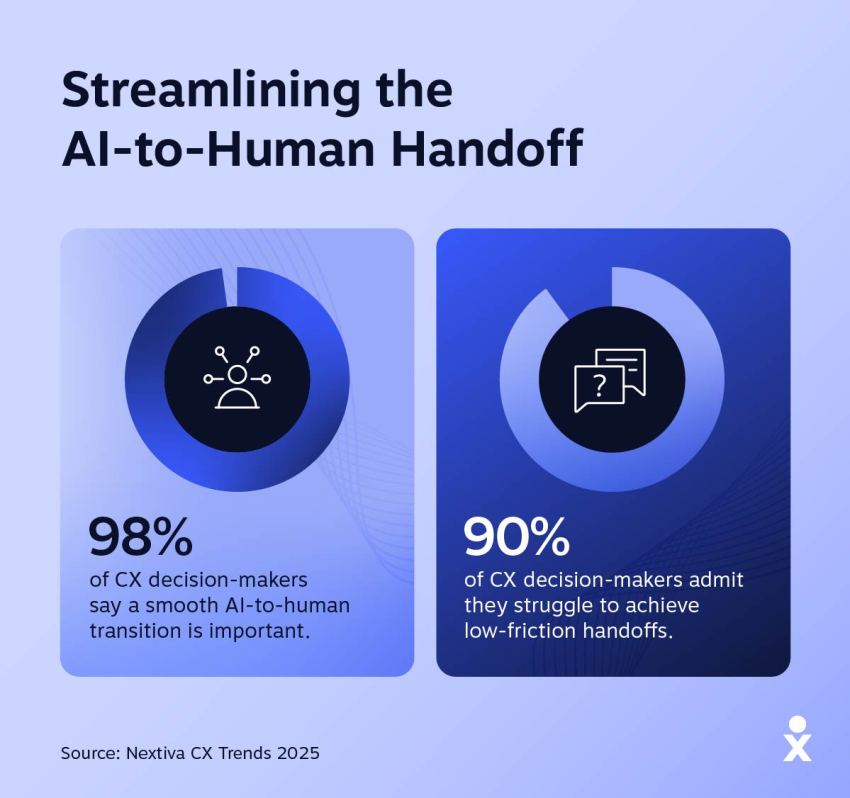
4. IVR with update announcements
Your contact or call center is the first place most customers reach out to when they have a problem. The good news is that you can provide proactive customer service with your company’s phone system to address known issues. For example, a customer might call in because a feature they regularly use stopped working.
Interactive voice response (IVR) can help them navigate to the right agent and keep them informed. It might seem obvious, but a simple update message can let customers know you understand their issues and are working to fix them, all without talking to a live agent. It’s a simple way to show proactive engagement and empathy.
5. Support CRM and screen pop for support agents
Customers will always need to talk to a support agent at some point. There’s no getting around that. However, you can still bring a proactive approach to phone calls.
Knowing who your customers are, what they’ve purchased, and their past interactions before they call will allow you to pre-emptively offer solutions instead of making customers repeat their issues.
To give your agents this data, use a tool like Nextiva’s screen pop that instantly highlights important customer data before they even answer the call. You can customize screen pop to show the data that matters most to your business, including:
- Customer name and company
- Recent customer survey responses
- Overall experience score
- Last interaction sentiment
- Account value
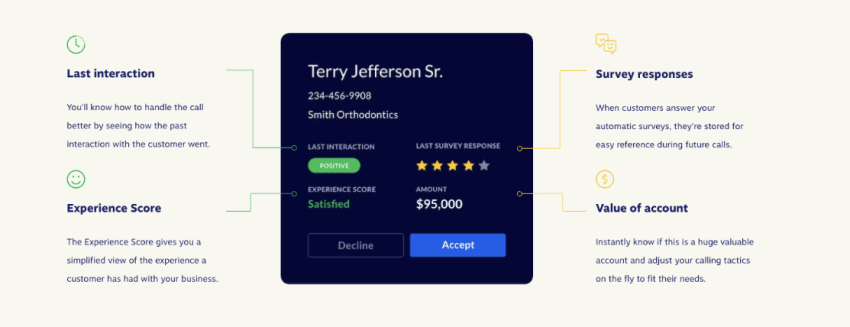
6. Surveys and real-time feedback
A critical part of any proactive customer service strategy is listening to your customers and understanding their needs. Set up automatic surveys or real-time ratings after each interaction to get continuous feedback on how you’re doing and where you can improve. You can create automated messages based on these responses.
Alternatively, use survey data to identify customers needing additional help or facing bigger issues. If someone leaves a one-star rating or angry comments, you can escalate to a call from an agent or support manager.
7. Support and automation along the customer journey
Exceptional customer service feels like it happens right before you need it. But it’s impossible to manually monitor every customer interaction and jump in at the right time. However, you’re constantly gathering data about your customer from interactions, surveys, and feedback forms. All this data creates a customer journey, a map of their current feelings about your company and brand.
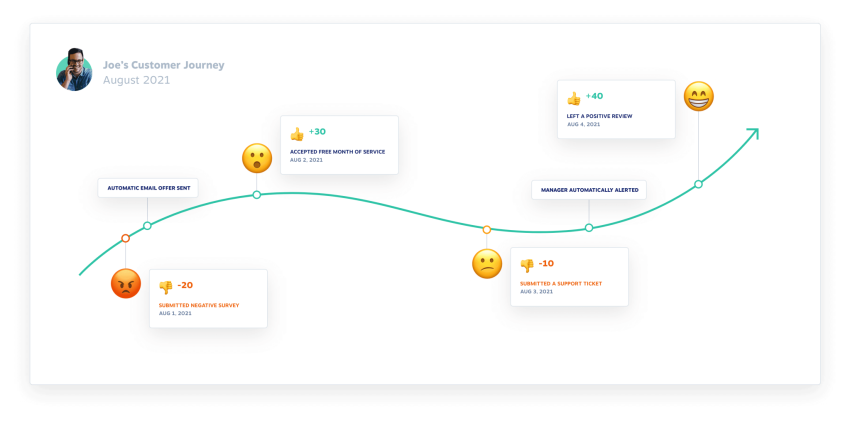
Customer journeys are powerful tools for support and sales, and one of their best uses is providing proactive service through automation. Customer service automation reduces human involvement in support by automatically supplying resources at the right time. For instance, Delta Air Lines allows you to navigate any airport with an interactive airport map.
8. Product and feature updates
Every new product or feature update changes the customer experience, for better and worse. Instead of waiting for customers to interact with your new service or tools and reach out, be proactive about upcoming changes and how they’ll impact your customers.
A best practice is to plan ahead to ensure proactive customer service results, whether that means an email campaign, in-app notifications, or personalized phone calls.
For example, you could set up automated campaigns before launching with links to resources or information on how they can get in touch. Or, for high-value customers, you could reach out personally using your VoIP call center to walk them through the changes. Even if a change negatively impacts a customer, they’ll appreciate that you set expectations early on and were ready to help.
Spotify sends users personalized updates and recommendations based on their listening habits. For example, it may notify users of new releases from their favorite artists or suggest playlists that match their preferences.
9. Social listening
Social media is a great place for proactive engagement but also where you’re most likely to hear the rumblings of an incoming support crisis or negative online reviews. With the right social listening tools, you’ll have the opportunity to monitor customer sentiment and provide proactive customer care, giving you a competitive advantage.
Though it’s impossible to monitor every conversation happening about you online, an omnichannel contact center like Nextiva organizes your social media, phone, SMS, email, and chat into a more manageable way.
When a customer mentions your brand name or sends you a message, you’ll be alerted and can see what they wrote and respond. Those customer interactions are visible across your omnichannel contact center. So if the conversation moves from Twitter to chat to phone, you’ll have the history and context to provide excellent and proactive customer support.
How Can a Company Implement Proactive Customer Service?
So now that you have a good idea of why proactive service is important, which problems you can solve before you lose a customer, and the benefits to your business of a proactive approach, it’s time to put together your toolkit.
Here’s how you can implement proactive customer service solutions:
| Funnel Stage | Proactive Support Tools |
|---|---|
| Preempting issues Before customers know they have a problem. | FAQ Automated messages Chatbots & IVA Customer journey Social listening |
| Self-serve When customers have issues and go looking for resources themselves. | Knowledge base AI-powered chatbots IVR |
| Contact center If self-service options don’t work and customers directly reach out to the support team. | Live chat Customer service CRM Screen pop |
| Ongoing feedback Using customer requirements and recurring issues to improve proactive support. | Surveys Automated check-ins Conversations analysis |
Nextiva Helps You Deliver Proactive Customer Service
Great customer service is about being ready instead of reacting.When you understand your customers’ needs and behaviors, you can step in with the right answers before they even ask.
Nextiva gives you the tools to do just that. With automated alerts, intelligent routing, real-time analytics, and a connected CRM, your team can anticipate issues, simplify support, and create standout experiences at every touchpoint.
Book a demo today and explore how our customer experience solution can help you deliver proactive support that keeps customers coming back.
Surprise and delight customers.
Sales and support teams use Nextiva to deliver a better customer experience.
Proactive Customer Service FAQ
Start by using AI tools like chatbots and sentiment analysis to handle common questions, detect customer frustration, and route issues to the right agents. Over time, these tools help reduce response times and personalize support at scale.
Analyze support tickets, chat logs, and feedback to spot common issues. Partner with sales, product, and marketing teams to understand customer pain points, then create content or solutions that address those problems before they escalate.
Feedback reveals what customers really need. When you act on it, whether by updating a product, refining support content, or improving service, you show customers you’re listening, which builds trust and prevents repeat issues.

















 Customer Experience
Customer Experience 

